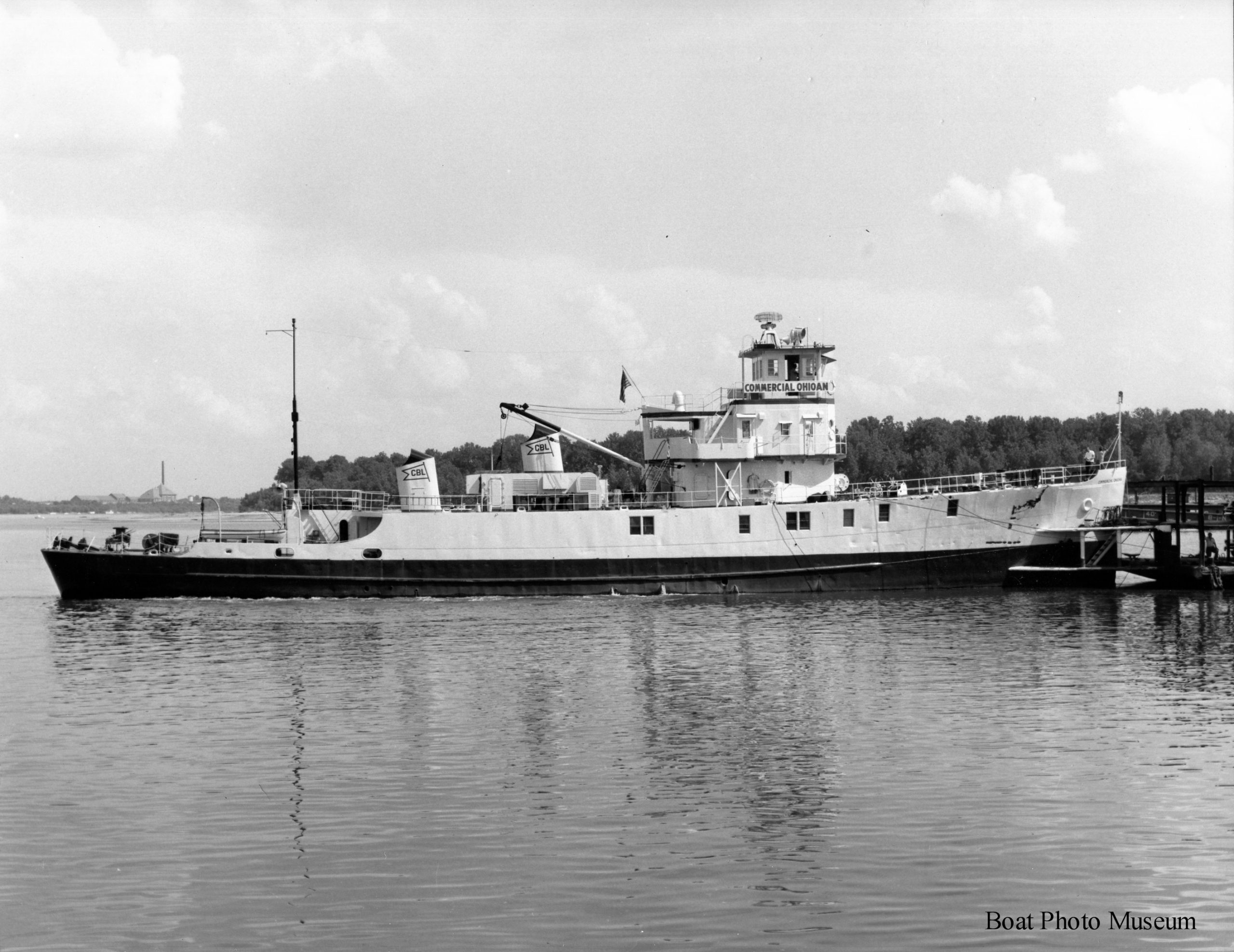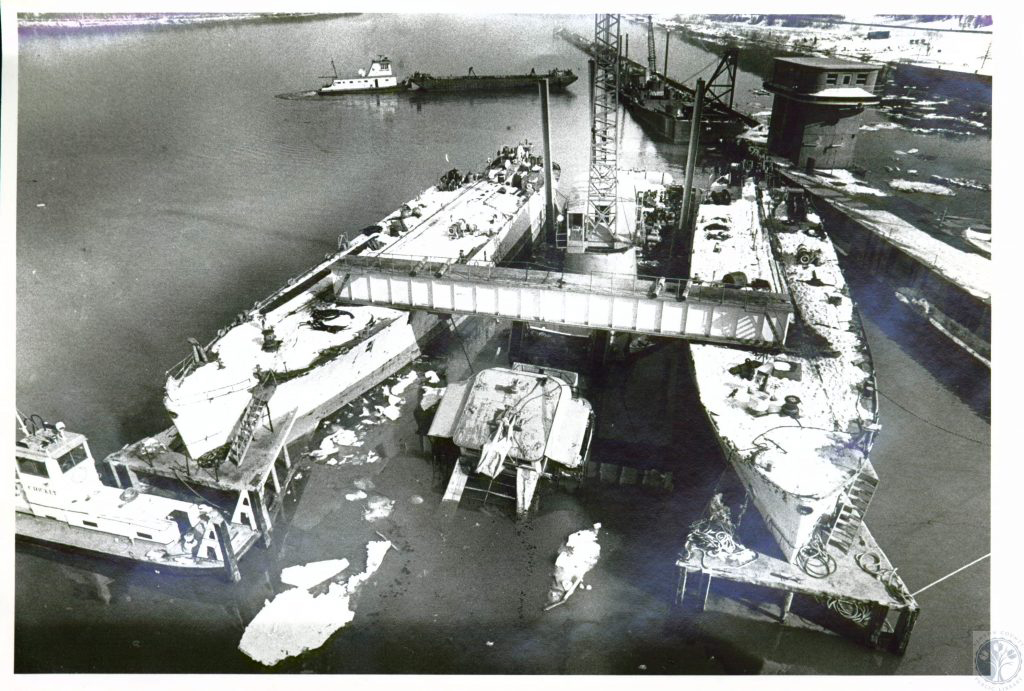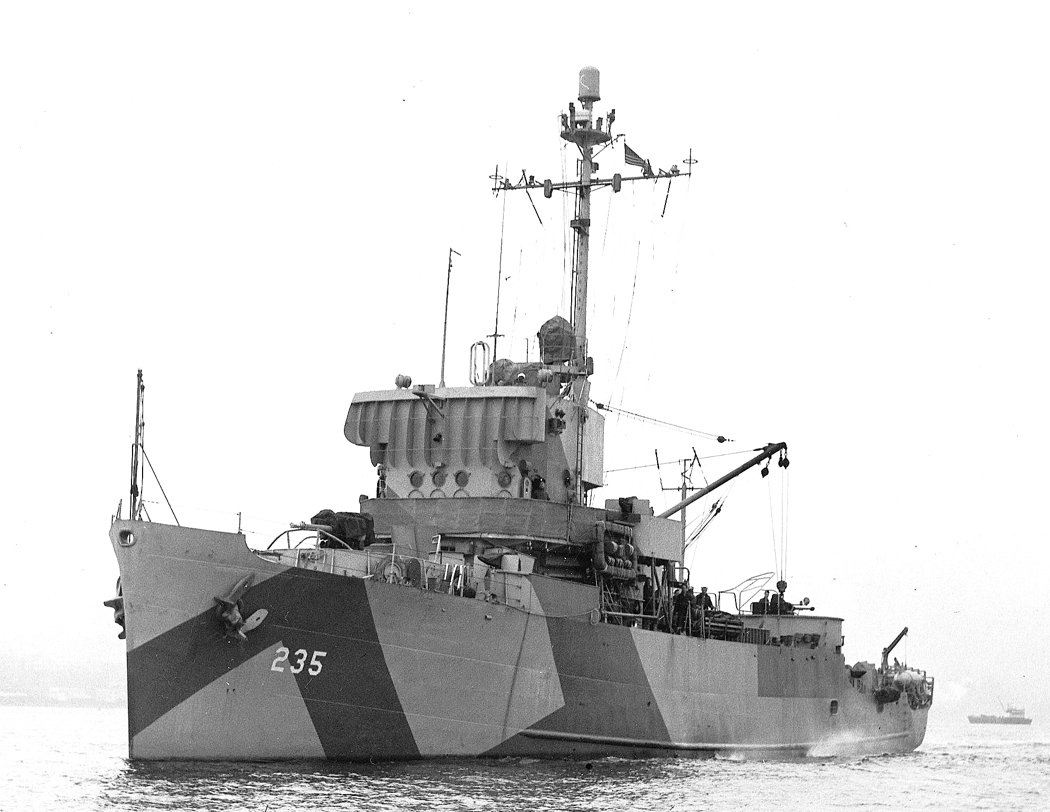Throughout the years there have been many types of vessels converted into river towboats, but likely few as odd as the two detailed in this column. Built for the U.S. Navy as Admirable–class minesweepers at the height of the industrial push for the World War II effort, they served with distinction and then went on to peacetime commercial use on the inland river system.
The USS Incessant (AM-248) was built by Savannah Machine and Foundry Company, Savannah, Ga., and was commissioned on March 25, 1944. Designed to clear minefields in coastal waters, it was constructed with a steel hull that was 184 feet by 33 feet and had 1800 hp. from two Cooper-Bessemer GSB-8 diesel engines that turned 750 rpm. The gears had a 2:1 reduction. Crew compliment was 104 and, following shakedown, the Incessant departed Norfolk, Va., on May 24, 1944, for training in the Caribbean and Gulf of Mexico before returning to Norfolk. On July 23 of that year, it sailed in a convoy bound for France.
After clearing mines off the southern French coast and in the Mediterranean, the Incessant was deployed to Sevastopol, Russia, in January 1945. It performed rescue work in the Black Sea and departed for the United States in April. It arrived back at Norfolk in May of that year and then was sent to the western Pacific by way of the Panama Canal and San Diego, Ca. The Incessant arrived at Pearl Harbor on August 21, 1945, about a week after the Japanese surrender was announced but before the formal surrender in September.
Incessant performed minesweeping throughout the Pacific after the cessation of hostilities, and in March 1946, the vessel was in Shanghai to be transferred to the Chinese government. However, that never happened, and it returned to Seattle, Wash., where it was decommissioned on November 6, 1946, and transferred to the Maritime Commission for disposal two years later.
The USS Fixity (AM-235) was an exact sister vessel to the Incessant but was built by the Puget Sound Bridge and Dredging Company, Seattle. It was commissioned on December 29, 1944, and sailed from San Pedro, Calif. on March 4, 1945, for Hawaii. For the remainder of the war, it served in the Pacific theater. After the formal surrender in September 1945, the Fixity performed mine sweeping operations in Japanese waters until February 1946, when it sailed for the U.S. West Coast. It was decommissioned at Bremerton, Wash. on November 6, 1946, and, like the Incessant, was transferred to the Maritime Commission for disposal in 1948.
Commercial Barge Line had been formed in 1936 as a part of Commercial Carriers, identified in company literature as the “largest automobile transport firm” in the United States. It moved autos by barge to and from terminals in places such as Cincinnati, Ohio, Louisville, Ky., and Evansville, Ind., on the Ohio River; Guntersville, Ala. on the Tennessee River; St. Louis on the Upper Mississippi; and Memphis, Tenn., and New Orleans on the Lower Mississippi.
Commercial Barge Line acquired both the Fixity and Incessant from the Maritime Commission. The Fixity was converted to river towing at Paducah Marine Ways, Paducah, Ky., in 1949 and renamed Commercial Dixie. The Incessant was converted at the same shipyard in 1950 and renamed Commercial Ohioan. The conversion included the removal of tall masts and the uppermost superstructure and the addition of a traditional towboat-type pilothouse. To allow the ships to connect to barges, a large double stage platform was affixed to the sharp bows.
Commercial utilized the two vessels in the transport of autos until its merger with American Barge Line in the early 1960s to become American Commercial Barge Line. According to the Inland River Record, the Commercial Dixie was sold in May 1961 to Beatty Inc. of Cincinnati, and in January 1963, they bought the Commercial Ohioan as well.
Capt. John Beatty used the two former minesweepers as the keystone of his salvage fleet, positioning them over sunken vessels so that the wreck could be raised between the two large hulls. Many notable salvage jobs were successfully completed in this fashion. Beatty passed away in 1994 at age 80 and his “Beatty’s Navy” was sold to a firm intending to do contracting and salvage work.
As detailed in this column in the September 23, 2024, issue of The Waterways Journal, while on a project at Maysville, Ky., near Ohio River Mile 409.5 in 1995 a crane barge sank, followed by first one and then the other minesweeper hull. In October of that year, the towboat Clare E. Beatty, once Capt. Beatty’s pride and joy, sank there as well.
The two vessels that were originally designed as minesweepers had a career that spanned a half century. The valiant Fixity and Incessant had performed daring and dangerous wartime duty, then a decade of service as river towing vessels, followed by 30 years as successful salvage vessels.





